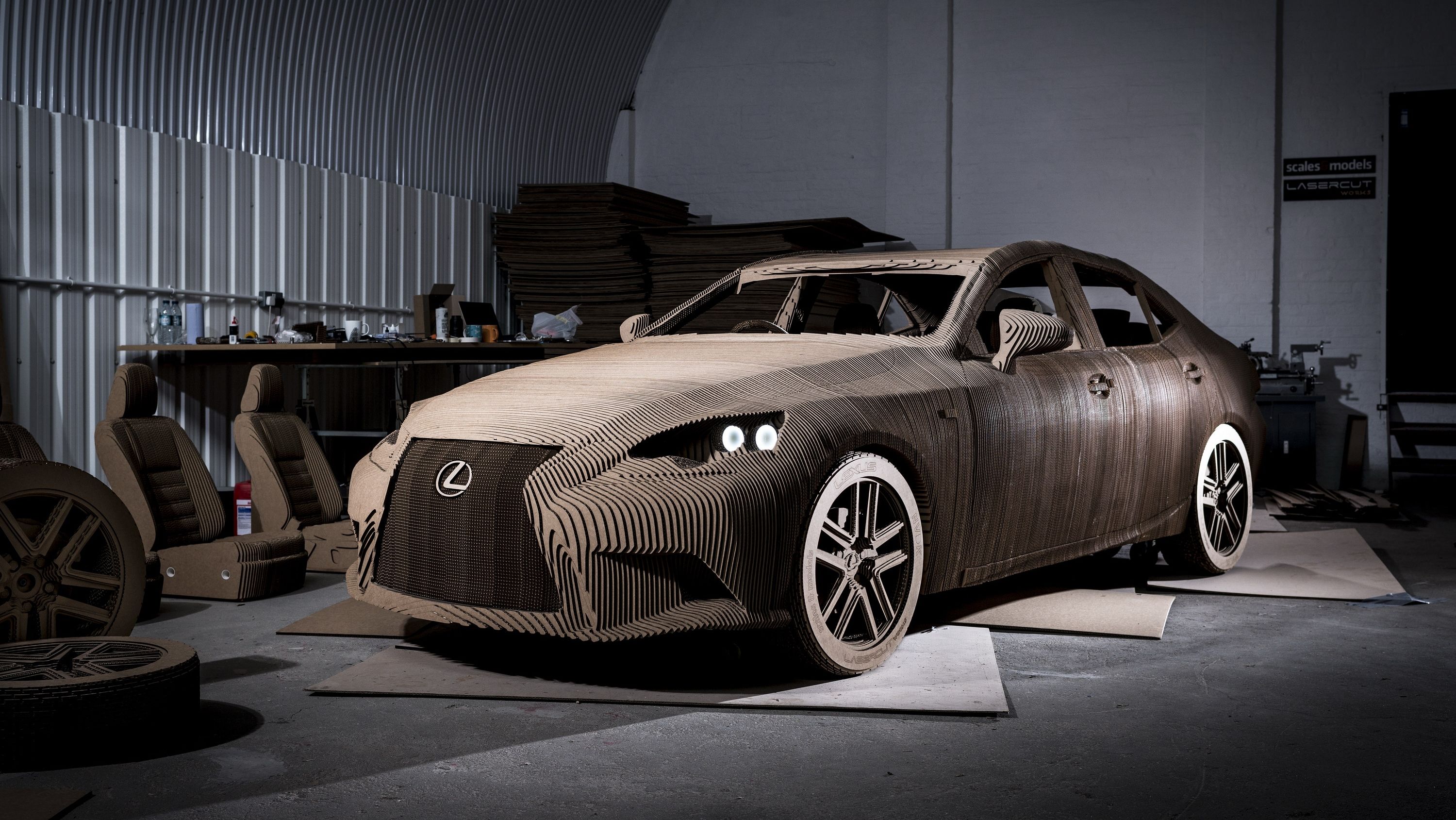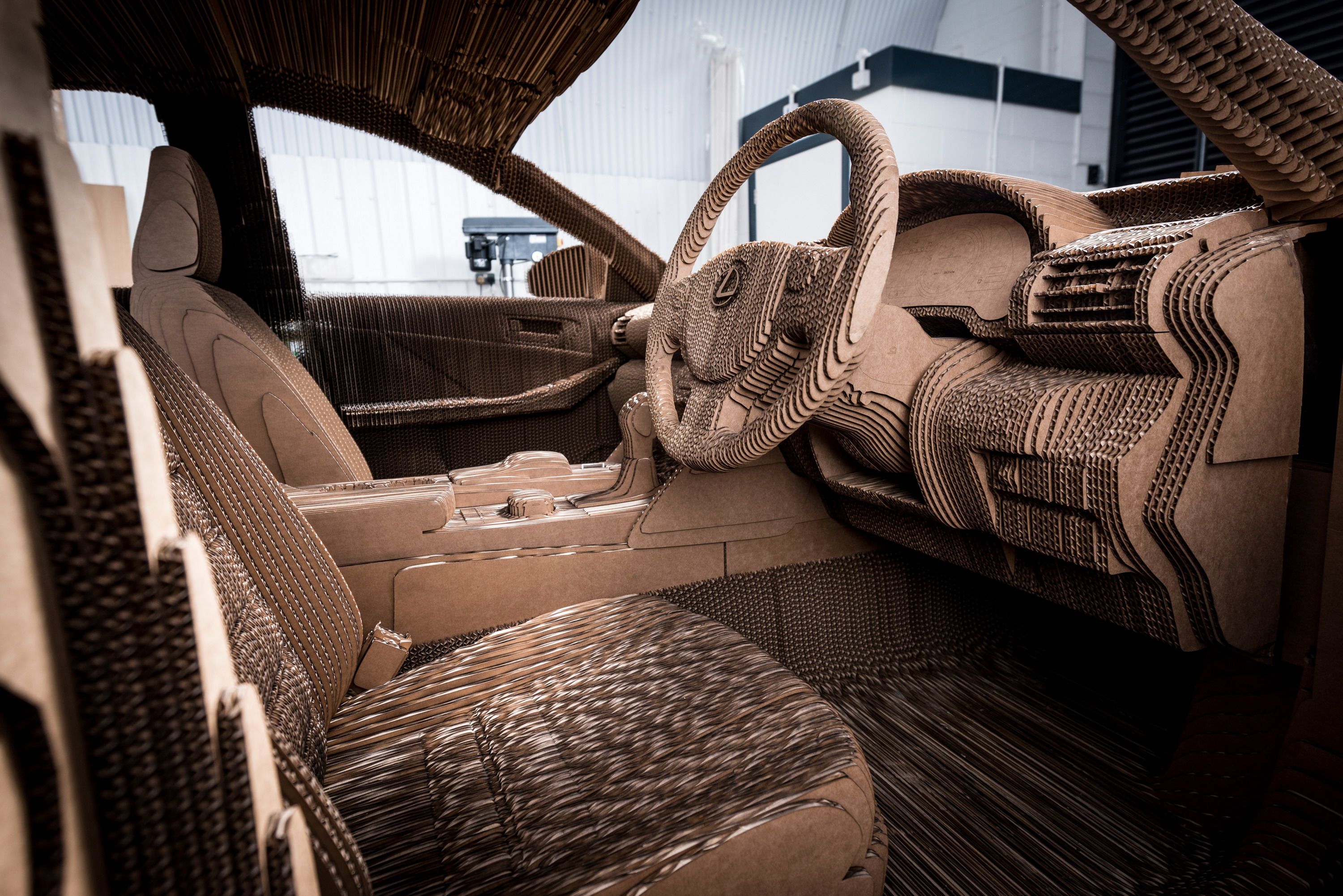At first glance, this wild-looking Lexus->ke47 might appear as though it was created via some breakthrough 3D-printing technique, but look more closely and you won’t see any plastic. It’s actually a one-off, life-sized origami model that expertly reconstructs the new IS sedan->ke500 line for line. And believe it or not, you can sit in it and drive it around.
Lexus commissioned the project as a “celebration of the human craftsmanship skills” that go into each of its models, particularly from the workers on the production line. Also known as “takumi” (the Japanese word for “artisan”), Lexus asks these men and women to sharpen their dexterity by folding an origami cat using only their non-dominant hand.
The origami Lexus was constructed using 1,700 individual cardboard sheets, each laser-cut for exacting precision. You’ll also find working headlights and a frame made from steel and aluminum Nearly every other component, however, is recreated with cardboard, including the body, opening doors, rolling wheels, and a full interior. The car is also quite green – motive power is derived from an electric->ke1030 motor, and all of the cardboard is recyclable.
From start to finish, the project took three months to complete. U.K. residents can check out the origami Lexus in person when it makes its first public debut at the Grand Designs Live Show at the National Exhibition Centre in Birmingham, October 8th.
Continue reading for the full story.
Why it matters
The origami Lexus was created by a five-member team of designers and modelers from LaserCut Works and Scales and Models, two U.K-based companies that specialize in prototyping and architectural models. Meanwhile, the cardboard came from manufacturer DS Smith.
Even though it’s made of the same stuff used to store junk in your Mom’s attic, the origami Lexus called for a good deal of technology in its creation. First, Lexus provided the team with a digital 3D model of the car, which was used to render specific sections (body, dash, seats, wheels, etc.). Each component was then broken down even further into individual 10 mm “slices” that would be used to recreate the 3D shapes using 2D cardboard layers. Finally, each slice was given a reference number for assembly.
Alongside the computer modeling and lasers, the car had to have that all-important, artisanal human touch. As such, the final phase saw the whole thing put together by hand using a water-based wood glue.
Ruben Marcos, founder and director at Scales and Models, said the seats and wheels were particularly challenging, requiring multiple iterations to perfect.
“In effect we created our own vehicle production line,” Marcos said. “There was a lot of repetition in the process and we had to work with military precision, just like the teams that make the real Lexus cars.”
First there was metal, then plastic, then carbon fiber. Is cardboard the next big material revolution?
No, but this thing is still pretty cool. The level of accuracy is just insane, particularly in the cabin – check out the pictures to see what I mean.
Lexus IS
You can read our full review of Lexus IS here.


